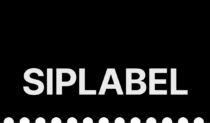WINE LABELLING
How to meet EU wine labeling requirements in 2024?
If you are a wine producer or distributor aiming to sell on EU markets, this article is for you.
In it, we summarize the most important information related to EU Regulation 2021/2117, which introduces new rules for wine labeling. According to this regulation, all wines that will be produced after December 8, 2023 must display information on composition, allergens, energy value and nutritional value.
Part of this information must be provided directly on the bottle of wine, but some required information can also be provided via electronic means. The most suitable of them is the electronic label, which is presented on the bottle via a QR code. After scanning it with a mobile phone, the customer will be shown an electronic label belonging to a specific wine.
What are the advantages of using electronic labels to display the required information?
It is electronic labels and their associated QR codes that represent a suitable solution for winemakers to meet the requirements of the EU regulation. For wine producers, they bring three positive properties:
- The electronic label can be automatically translated into the official EU language known and preferred by the customer scanning the QR code.
- The information provided on the electronic labels can be changed in real time, thus correcting any errors that you notice only after the electronic label has been created.
- The QR code on the printed label does not take up much space. It makes it possible to maintain the complete design of the label and at the same time provide the consumer with all the requested information.
What is the deadline for meeting the requirements?
Wine that was produced before December 8, 2023 is exempt from the requirements of the regulation. It can be sold in the EU after this date, while stocks last. The requirements of the regulation thus apply only to wines produced after December 8, 2023.
What happens if the wine does not comply with EU wine labeling rules?
In accordance with Article 89, IV. chapters of EU Regulation 1306/2013, wine that does not comply with the new regulation may be withdrawn from the EU market and, in addition, administrative sanctions may be imposed on the company that violates this regulation. Enforcement of compliance with this regulation through relevant inspections is delegated to each EU member state.
What information must be included on the printed wine label and what can be included on the electronic label?
Information on energy value must be indicated on wine labels using the "E" symbol. They must be stated per 100 ml portion.
All potential allergens must also be prominently displayed on the wine label and listed under the word “Contains".
Information on composition and nutritional value must also be provided, but can be accessed via an electronic label represented by a QR code on the bottle. After scanning it, the customer is redirected to a specialized website with the required information.
It is important to note that the electronic label cannot contain any information intended for sales or marketing purposes. Displaying sales and marketing information together with required information on composition or nutritional values is a breach of the regulation.
How to find out and calculate the energy value of wine?
According to the regulation, there are two acceptable methods of energy calculation:
- Method 1: Formula calculator with conversion factors based on sugar, alcohol and several other parameters.
- Method 2: Using a general average value for individual types of wine, such as red-dry, sparkling-sweet, etc.
Siplabel offers you the use of a calculator with which you can easily calculate the required energy value.
In what language must the information be displayed?
The regulation requires that said information be available in an official EU language that is easily understood by the consumer. It also states that EU member countries can determine the languages in which electronic labels must be displayed. Siplabel provides information in all official EU languages. This ensures the fulfillment of this requirement.
Is the use of presentation web pages to display the required information in accordance with the requirements of the regulation?
Most platforms used to build websites include tracking software that could store data on customers who view your e-labels. The EU regulation expressly prohibits this.
In addition, no sales or marketing information may appear on electronic labels.
Therefore, if you decide to place electronic labels on your own presentation website, there is a risk that it will not comply with the requirements of the regulation.
Siplabel gives all the required information in a way that is fully compliant with the requirements of the EU regulation. It is therefore the most reliable solution for displaying electronic labels for wine producers and distributors.
Register your products today here and be ready for a new legislation.

